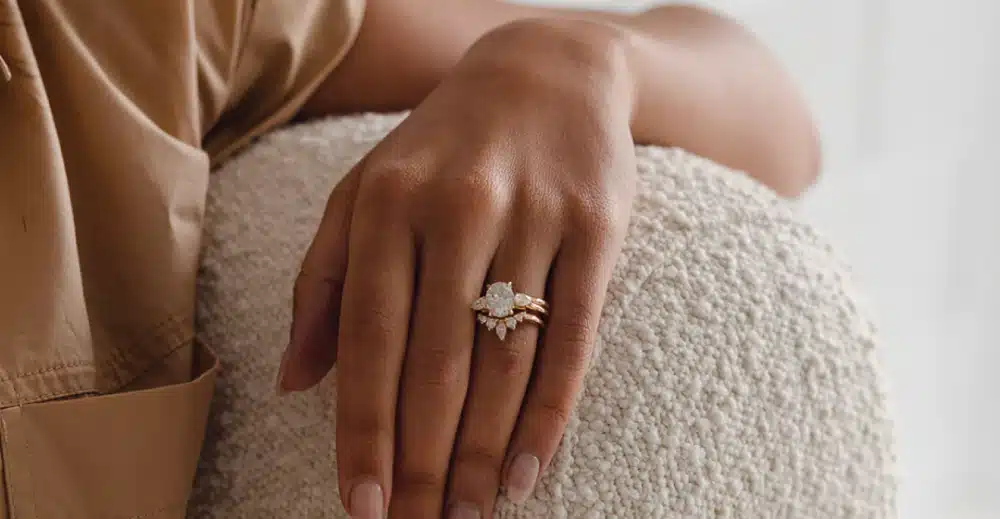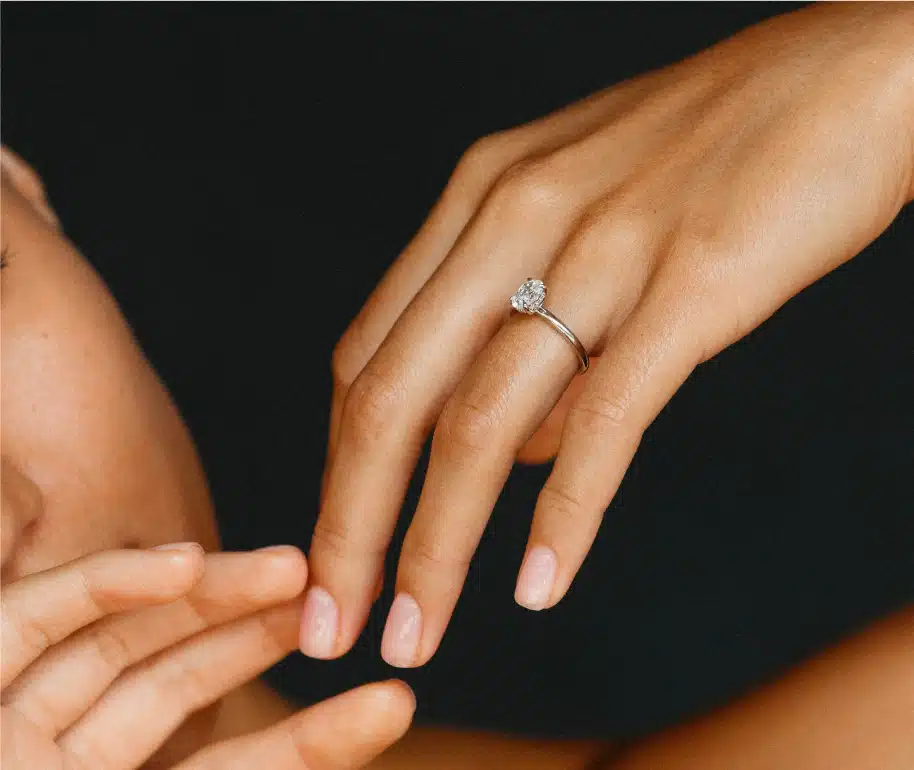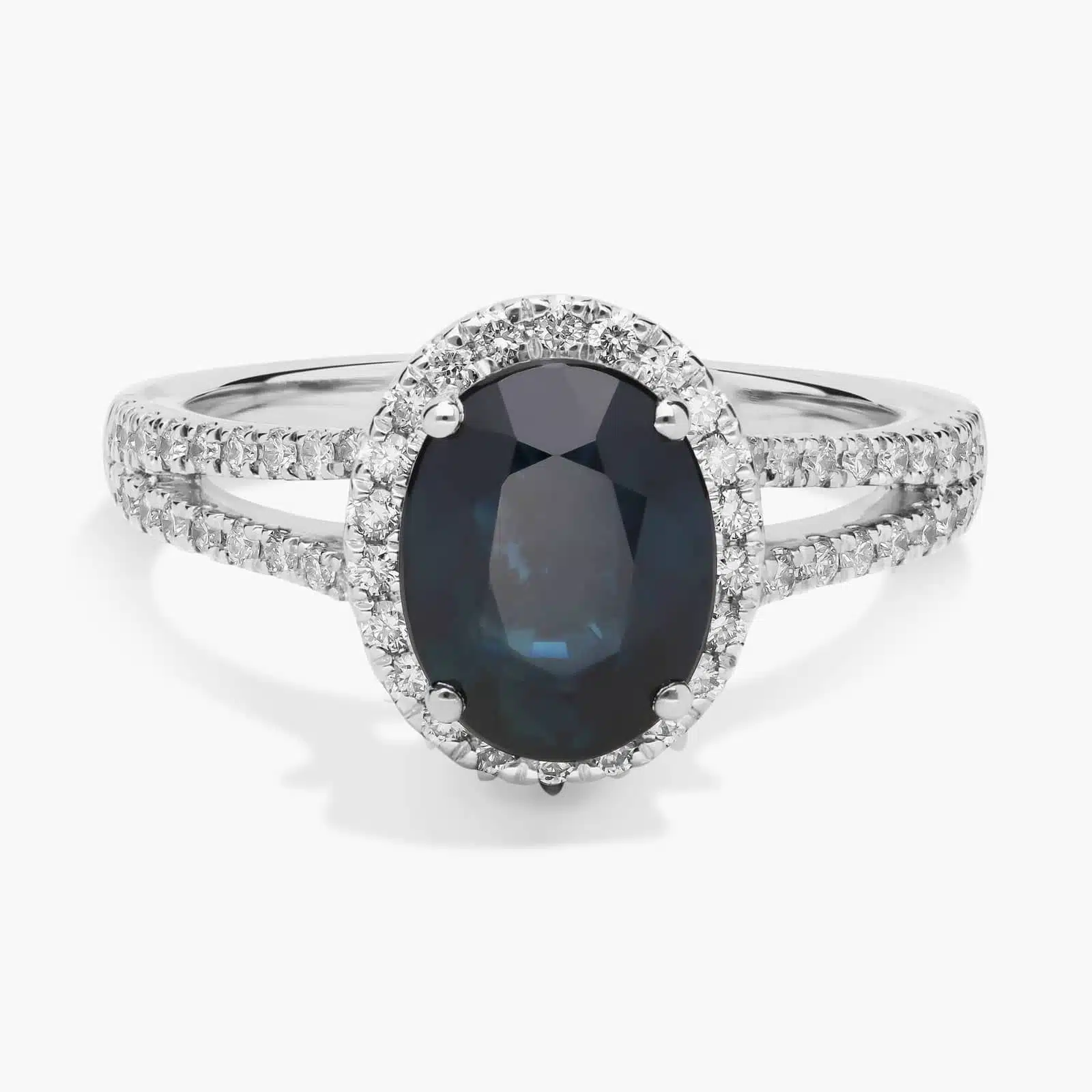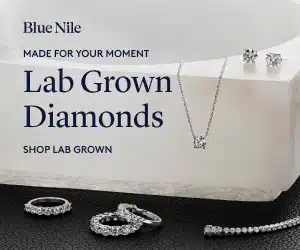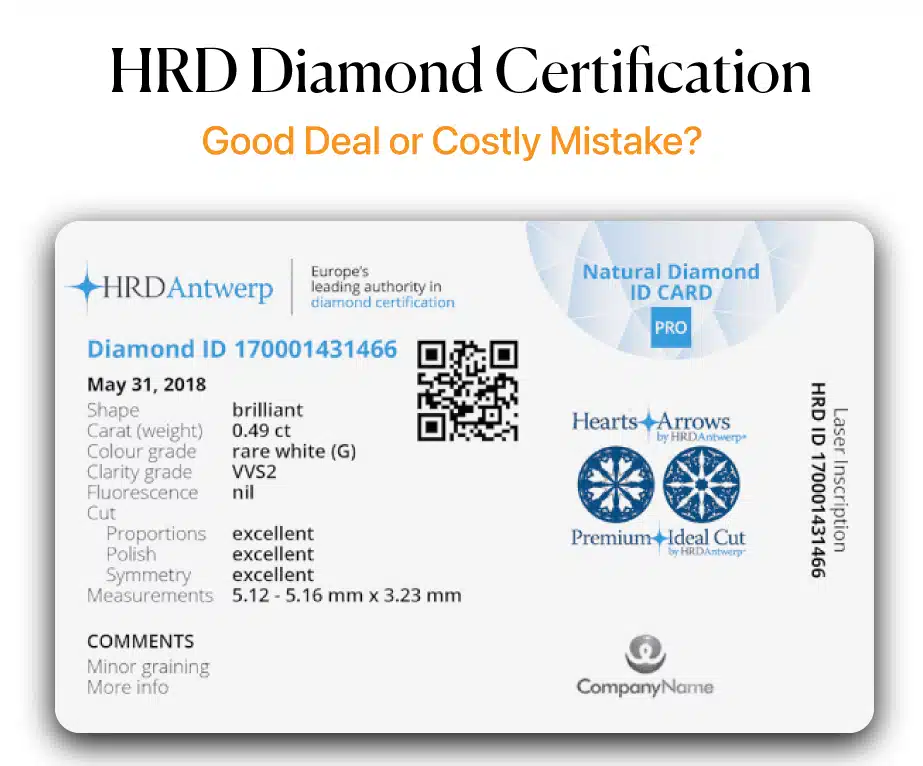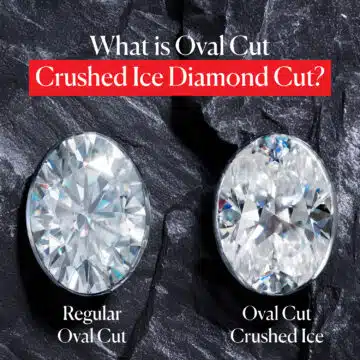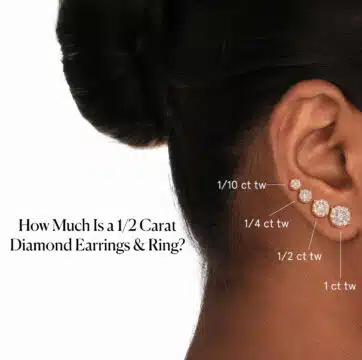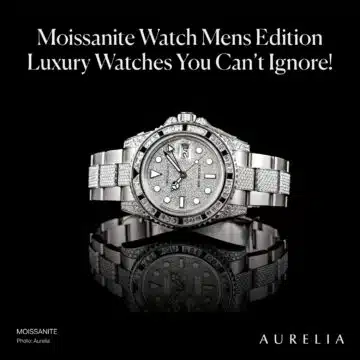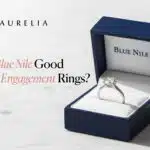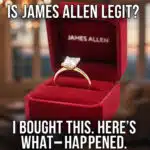HRD is a legitimate and well-known diamond grading lab, but its certification is generally considered less consistent and more lenient than the GIA standard, which can lead to you unknowingly overpaying for a lower-quality diamond.
You’re probably here because you’ve found a diamond that looks fantastic on paper. The price seems almost too good to be true, but the certificate says ‘HRD,’ not the ‘GIA’ you’ve heard so much about. You’re wondering, ‘Is this a hidden gem or a hidden trap?’
As your friend in the business, my job is to protect your wallet. I am going to walk you through the hard, verifiable data—the same data the wholesale market uses—so you can see the real story behind HRD certification. We will leave no stone unturned, and by the end, you’ll know exactly how to make a smart, safe decision.
- Understanding Europe's Leading Diamond Lab
- Why GIA is the Global Standard
- What the Numbers Say About HRD's Grading Consistency
- My "Two-Grade Cushion Rule" for Evaluating an HRD Diamond
- "But My Jeweler in Europe Recommended HRD!"
- The Ultimate Litmus Test: What Do the Best Retailers Sell?
- The Verdict: You're Not Buying a Bargain, You're Buying Uncertainty
Diamond IQ Test: Natural or Lab-Grown?
Two identical diamonds: GIA Certified, 1.51ct, D Color, VVS1, Ideal Cut. One is natural ($16,530), the other is lab-grown ($2,390). Choose the diamond you like better and see if you can match it to its origin.
Understanding Europe’s Leading Diamond Lab
Before we get into the weeds of comparing reports and market data, it’s really important that we’re clear on who HRD actually is. They aren’t some fly-by-night operation that just popped up. They are a major, established player in the diamond world, and understanding their history is key to understanding the debate that surrounds their certification today.
Who is HRD?
HRD stands for “Hoge Raad voor Diamant,” which is Flemish for “Diamond High Council.” They were established in 1973 in Antwerp, Belgium, and their location is no accident. Antwerp has been one of the most important diamond trading centers in the world for centuries.
Being the foremost lab in the historic heart of the diamond trade gave HRD a tremendous amount of credibility, especially within the European market.
They were founded with the mission to uphold the integrity of the Belgian diamond industry, providing grading services, education, and research.
Their Role in the Industry
Let me be perfectly clear: HRD is a legitimate organization, not a fraudulent one. They are a respected authority that provides a detailed analysis of a diamond’s characteristics.
An HRD certificate will accurately tell you a diamond’s measurements, weight, and document its inclusions. They are a pillar of the European diamond trade.
But here is where we get to the core of the issue, and the entire reason you’re probably reading this article.
The Core Issue: Legitimacy vs. Consistency
The debate I, and other gemologists, have with HRD certification is not about their legitimacy, but about the consistency and strictness of their grading when compared to the global industry benchmark.
Think of it like two different college professors. One is known for being an incredibly tough but fair grader—their “A” is a universal sign of excellence. The other professor is also qualified and knowledgeable, but their grading is a bit more lenient and can be inconsistent from one test to the next.
You might get an “A” from the second professor, but it doesn’t carry the same weight or universal respect as an “A” from the tough grader.
In the international diamond market, the Gemological Institute of America (GIA) is that tough, fair grader. They literally invented the 4Cs system that the entire world now uses.
For a diamond’s certificate to be trusted equally by a dealer in New York, a jeweler in Hong Kong, and a buyer in London, its grades must be consistent and reliable. The entire global market is built on the trust that a “G color, VS2 clarity” diamond is the same thing, no matter where you are.
This is why the GIA standard is so critical. A complete overview of that standard can be found in our Diamond Grading Chart: 4 Cs of Diamonds guide.
So, the real question isn’t “Is HRD a real lab?” The real question is, “Does an HRD ‘G-VS2’ mean the same thing as a GIA ‘G-VS2’?” To answer that, we have to look at the hard data.
Why GIA is the Global Standard
Before we dive into any direct comparisons, you need to understand what we are comparing against. In any industry, there has to be a benchmark, a gold standard that everyone else is measured by. In the diamond world, that standard is unequivocally the GIA.
GIA (Gemological Institute of America)
The GIA isn’t just a grading lab; it is the grading lab that created the system the entire industry runs on. Here’s what you need to know:
- They Invented the Language: The GIA is responsible for creating and popularizing the 4Cs (Cut, Color, Clarity, and Carat Weight) in the 1940s and 50s. They created the very language we use to determine a diamond’s quality.
- Their Mission is Consistency: The GIA operates as a non-profit organization with a mission focused on research and consumer protection.
They have multiple locations around the world, but their primary focus is ensuring that a “G” color diamond graded in their Mumbai lab is identical to a “G” color diamond graded in their New York lab. - They are the Market’s Benchmark: This unwavering consistency is why the GIA report has become the de facto “passport” for a diamond. The entire international wholesale market, from the miners to the dealers to the retailers, uses the GIA standard as the baseline for pricing.
A GIA certificate is a guarantee of accuracy and consistency, which is why it carries the most weight and trust.
AGS (American Gem Society)
There is only one other lab that is widely considered to be on the same top tier as the GIA, and that is the AGS.
- Scientific Approach to Cut: The AGS is particularly renowned for its incredibly detailed and scientific approach to grading a diamond’s Cut quality.
They use a 0-10 scale (with 0 being “Ideal”), and many in the trade consider an AGS Ideal cut to be the absolute pinnacle of craftsmanship, sometimes even a step beyond GIA’s “Excellent” grade. - Another Pillar of Trust: An AGS certificate is also a symbol of unquestionable integrity and accuracy. Seeing an AGS report, especially for a round brilliant diamond, should give a buyer complete and total confidence.
The Point of Comparison
So, when we ask, “Is HRD certification good?” what we are really asking is, “How does an HRD certificate compare to the consistent, globally respected standards set by the GIA and AGS?” The entire value proposition of a diamond certificate rests on its reliability. This is the benchmark against which all others must be measured. Now, let’s look at the evidence.
What the Numbers Say About HRD’s Grading Consistency
Alright, we’ve established the GIA as our benchmark. Now, it’s time to put the HRD report to the test. In the diamond industry, talk is cheap. Opinions don’t matter; data does. When you’re spending thousands of dollars, you deserve to see the hard evidence. So, I’m going to walk you through three different data-driven tests that reveal the real story about the consistency of HRD’s diamond grading.
The “Grading the Graders” Experiment (Rapaport Data)
Back in 2013, one of the most respected news sources in the diamond industry, Rapaport, published a now-famous article called “Grading the Graders.” They conducted a simple but brilliant experiment to check the consistency between the world’s major labs.
- The Test: They took 10 different diamonds and sent them, completely blind, to 6 different labs around the world, including both GIA and HRD.
- The Results: When the certificates came back, the findings were stunning. To compare the results easily, Rapaport assigned a number to each grade. For the exact same 10 diamonds, GIA’s average final grade was 14.8. HRD’s average final grade was 16.3.
This means that, on average, HRD’s grades were a full 1.5 grades higher than GIA’s for the exact same set of stones.
This isn’t just a slight variation; it’s a clear and documented pattern of more lenient grading. This was the first major piece of public data that established a tangible difference in GIA standards versus HRD.
Our Own Independent Test (The 4-Diamond Study)
To see if this pattern of inflated grading still holds true, we ran our own smaller, more recent experiment, sending 4 diamonds to both HRD and GIA for a direct, head-to-head comparison. The results were just as revealing.
Here’s the raw data:
| HRD Grade | HRD Certificate # | GIA Grade | GIA Certificate # |
| H SI1 | 16029790002 | I SI2 | 2175798415 |
| F SI1 | 16029790001 | G SI2 | 2175798417 |
| G SI2 | 16029790004 | G SI1 | 2171798416 |
| G SI1 | 16029790003 | H SI2 | 2175798425 |
Look at this. This is the part that truly worries me as a professional. Out of 4 stones, three received a 2-grade upgrade from HRD compared to their GIA grade (e.g., the F-SI1 was called a G-SI2 by GIA). But look at the third stone: HRD actually downgraded it in clarity (SI2) compared to GIA (SI1).
This is a critical point. This isn’t just about lenient grading anymore; it’s about a lack of consistency. When you buy an HRD-certified diamond, you simply don’t know what you are getting.
Will it be one or two grades higher than its “real” GIA grade, or will it be lower? This level of uncertainty is the absolute enemy of a smart and safe diamond purchase.
The Market’s Verdict: Following the Money (Rapnet Data)
This is the knockout punch. If my expert opinion and the independent tests aren’t enough, then let’s look at what the people who buy and sell diamonds for a living have to say. We can do that by looking at the pricing data from Rapnet—the global, members-only stock market for the wholesale diamond market.
The price of a diamond on Rapnet is the truest reflection of its market value. Below are two tables showing the average price-per-carat for GIA and HRD certified 1-carat diamonds with the same on-paper grades.
GIA Prices (Per Carat):
| IF | VVS1 | VVS2 | VS1 | VS2 | SI1 | SI2 | |
| G | $7,983 | $7,805 | $7,184 | $6,674 | $6,160 | $5,476 | $4,491 |
| H | $6,624 | $6,455 | $6,091 | $5,943 | $5,632 | $5,068 | $4,436 |
| I | $5,664 | $5,461 | $5,186 | $5,118 | $4,962 | $4,634 | $3,980 |
HRD Prices (Per Carat):
| IF | VVS1 | VVS2 | VS1 | VS2 | SI1 | SI2 | |
| G | $6,996 | $6,663 | $6,563 | $6,107 | $5,427 | $5,085 | $3,962 |
| H | $5,595 | $5,663 | $5,316 | $5,238 | $4,980 | $4,705 | $3,734 |
| I | $4,872 | $4,789 | $4,915 | $4,452 | $4,253 | $4,362 | $3,383 |
Look at the difference. A GIA-certified G-SI1 is worth $5,476 per carat. An HRD-certified G-SI1 is worth $5,085. A GIA H-SI1 is $5,068; an HRD H-SI1 is $4,705.
On average across the board, GIA stones are 13% more expensive than HRD stones with the exact same grades.
Here’s my take: The wholesale diamond market is not sentimental; it is ruthlessly efficient. There is only one logical reason for this consistent price gap: the market knows HRD’s grades are inflated when compared to GIA’s.
If they weren’t, dealers would buy up these “cheap” HRD diamonds, get them recertified by GIA, and make an easy 13% profit overnight.
The fact that this doesn’t happen tells you everything you need to know. The professionals have already priced in the risk of inconsistency, and as a smart buyer, you should too.
My “Two-Grade Cushion Rule” for Evaluating an HRD Diamond
Okay, the data is overwhelming, and frankly, a bit concerning. It clearly shows a pattern of both leniency and inconsistency. So what do you, the buyer, actually do with this information? How do you protect your wallet when you come across an HRD-certified diamond that looks appealing?
This is where you need a simple, protective rule of thumb. This is my personal method for safely evaluating any HRD-graded diamond—a strategy I call the “Two-Grade Cushion Rule.”
The Rule
To be safe, you should always assume an HRD-certified diamond is likely two combination grades lower than what its certificate states.
This means you would mentally downgrade it by one color grade AND one clarity grade. For example, if you see an HRD certificate for an F color, VVS2 clarity diamond, you should mentally treat it as a GIA-graded G color, VS1 clarity stone and, most importantly, evaluate its price against other GIA G-VS1 diamonds. This “cushion” is your safety net against the documented grade inflation.
A Real-World Example: How a “Great Deal” Vanishes
Let’s walk through a real-life scenario using the market data we just looked at. Imagine you are shopping and find two seemingly similar 1-carat diamonds:
- Diamond A: GIA Certified, G Color, VS2 Clarity. Price: $6,160
- Diamond B: HRD Certified, G Color, VS2 Clarity. Price: $5,427
At first glance, this looks like a no-brainer. Diamond B seems to be the exact same quality but is over $700 cheaper. It feels like you’ve found an incredible deal, a hidden gem the market has somehow overlooked.
Now, let’s apply my Two-Grade Cushion Rule.
We take the HRD G-VS2 (Diamond B) and mentally downgrade it by one color and one clarity grade. It should now be considered, for pricing purposes, as a GIA-graded H Color, SI1 Clarity diamond.
So, let’s look at the real market price for a GIA H-SI1 from our data table. Its price is $5,068.
Suddenly, the “great deal” completely evaporates. The HRD diamond, which you should be comparing to a GIA stone worth about $5,068, is actually priced at $5,427.
You aren’t saving $700; you are on the verge of overpaying by almost $400 for a diamond that is likely of a lower quality than what you think you’re getting.
An H color stone can be a fantastic buy when graded correctly, which is a core part of the smart-buying philosophy we discuss in our H Color Diamond Pricing Tips for Buyers. But paying a premium for one that is labeled as a G color is a classic trap.
This rule isn’t about being cynical; it’s about being smart and safe. It allows you to quickly assess whether an apparent bargain is real, or just a costly illusion created by an inconsistent certificate.
“But My Jeweler in Europe Recommended HRD!”
I want to take a moment to speak directly to our readers in Europe, because this is a question I get all the time, and it’s a very important one. You might be shopping in a beautiful store in Antwerp, Paris, or Amsterdam, and the jeweler is showing you stunning diamonds, all accompanied by HRD certificates.
It can feel confusing when the local expert advice seems to contradict what you’re reading online.
Acknowledging the Reality of the European Market
Let’s be very clear about this: your local jeweler is not necessarily trying to swindle you.
HRD is headquartered in Antwerp, Belgium, the historic heart of the world’s diamond trade. For decades, it has been the dominant and most respected grading lab in that part of the world.
As a result, in many European countries, HRD-certified diamonds are far more common and readily available in physical jewelry stores than GIA-certified stones.
Your jeweler is showing you what is available in their primary market, and what they themselves trust based on local industry norms.
The Savvy Buyer’s Move
Now that you are armed with the global market data, you have an advantage. You can combine the wonderful experience of shopping at a local jeweler with your newfound expert knowledge. Here’s what you do:
- Specifically Ask for GIA: When you’re in the store, simply say, “This HRD diamond is beautiful. Out of curiosity, do you have a GIA-certified diamond with similar specs I could see as well?” This is a perfectly reasonable request.
- Understand the Price Difference: Be prepared for the GIA-certified diamond to be more expensive than the HRD diamond, even if they have the exact same grades on paper. Don’t be surprised by this! You now know why.
That price difference is the 10-15% “certainty premium” that the global wholesale market has already assigned to the GIA’s consistency.
The Online Solution: The Global Equalizer
If your local store has a limited selection of GIA-certified diamonds, or if you want to be 100% sure you are getting the best value on a GIA stone, then this is the perfect reason to turn to trusted global online retailers.
Think of it this way: the internet has erased the regional differences in diamond inventory. A buyer in Berlin now has access to the exact same massive inventory of diamonds as a buyer in New York City.
Reputable online vendors are your direct line to the world’s best, most competitively-priced, and most reliably-graded diamonds.
Vendors like James Allen and Blue Nile have built their global businesses on the foundation of trust provided by GIA certification. They have massive inventories of GIA-certified diamonds and they ship securely all over the world, including throughout Europe.
This is why we so often rank them among the best places to buy engagement rings online. They give you, the European buyer, the power to choose from the global standard, not just the local one.
The Ultimate Litmus Test: What Do the Best Retailers Sell?
Alright, we’ve looked at the lab tests and we’ve looked at the wholesale market data. Now, for our final piece of evidence, let’s do a simple, real-world gut check.
Let’s look at what the biggest and most respected online diamond retailers—the companies that sell hundreds of thousands of engagement rings to savvy customers all over the world—choose to stock.
Why Top-Tier Online Stores Primarily Use GIA & AGS
Go to the websites for Blue Nile or James Allen. Use their search filters and look at the options for “Grading Report.” You will find a massive inventory of diamonds certified by the GIA and the AGS.
Now, look for HRD. In most cases, you will find it’s not even listed as an option.
My Mehedi Take
This is not an accident. Think about the business models of these online titans. They have built multi-billion dollar companies on a foundation of absolute trust and transparency with customers who they may never meet in person.
Their entire business hinges on the customer’s confidence that the diamond they see online is exactly what they will get.
They know their customers are smart. They know you’ve done your research. So, they choose to stock their inventories almost exclusively with diamonds that have been graded by the two most reliable, consistent, and globally respected labs in the world: GIA and AGS.
For these businesses, GIA isn’t just a choice; it’s a non-negotiable part of their quality control. This is the same principle that applies to all stones, and the reason we have an in-depth Blue Nile Reviews 2024 article—to hold these sellers to the highest standard of accountability.
For me, the fact that the biggest and best retailers have overwhelmingly voted with their inventory is one of the most powerful statements there is.
They are putting their money and their reputation behind the GIA and AGS standards, and as a buyer, that should tell you everything you need to know.
Your HRD Diamond Certificate Questions, Answered
You’ve seen the data, but it’s natural to have a few final questions. Let’s tackle them head-on so you can move forward with total clarity and confidence.
The Verdict: You’re Not Buying a Bargain, You’re Buying Uncertainty
While HRD is a legitimate laboratory, the data from independent tests and the wholesale market itself shows a consistent pattern of grade inflation and inconsistency compared to the GIA standard. A “good deal” on an HRD-certified diamond often isn’t a good deal at all; it’s just a lower-quality diamond with a more generous certificate.
As your friend in the business, my advice is firm: your engagement ring is too important a purchase to leave to chance. By insisting on a diamond with a GIA or AGS certificate, you are not just buying a stone; you are buying certainty, confidence, and the undisputed, long-term value you deserve. Don’t settle for less.
Continue Your Research Journey
Now that you understand the critical importance of diamond certification, here are some hand-picked guides to help you take the next step and continue your journey to finding the perfect diamond.
The In-Depth Retailer Reviews
- Our #1 Recommended Retailer: The Complete Blue Nile Review for 2024 – (https://moissanitebyaurelia.com/blue-nile-reviews-2024/)
- Another Head-to-Head Battle: Brilliant Earth vs. James Allen Compared – (https://moissanitebyaurelia.com/brilliant-earth-vs-james-allen/)
Advanced Diamond Knowledge
- The Other Top-Tier Lab: A Guide to the AGS Grading System – (https://moissanitebyaurelia.com/ags-grading-system/)
- A Deep Dive on Premium Cuts: Astor vs. True Hearts: A Battle of Premium Cuts – (https://moissanitebyaurelia.com/astor-vs-true-hearts/)
- Mastering the Sweet Spot: A Full Breakdown of VS1 vs. VS2 Diamond Clarity – (https://moissanitebyaurelia.com/vs1-vs-vs2-diamond/)
- The Full Story on Synthetics: An Expert Guide to the Types of Lab-Grown Diamonds – (https://moissanitebyaurelia.com/types-of-lab-grown-diamonds/)
Practical Guides & Strategies
- Your Next Step: A Step-by-Step Guide to Build Your Own Engagement Ring on James Allen – (https://moissanitebyaurelia.com/build-your-own-engagement-ring-on-james-allen/)
- Visualize the Size: A Visual Diamond Carat Size Chart – (https://moissanitebyaurelia.com/diamond-carat-size-chart/)


